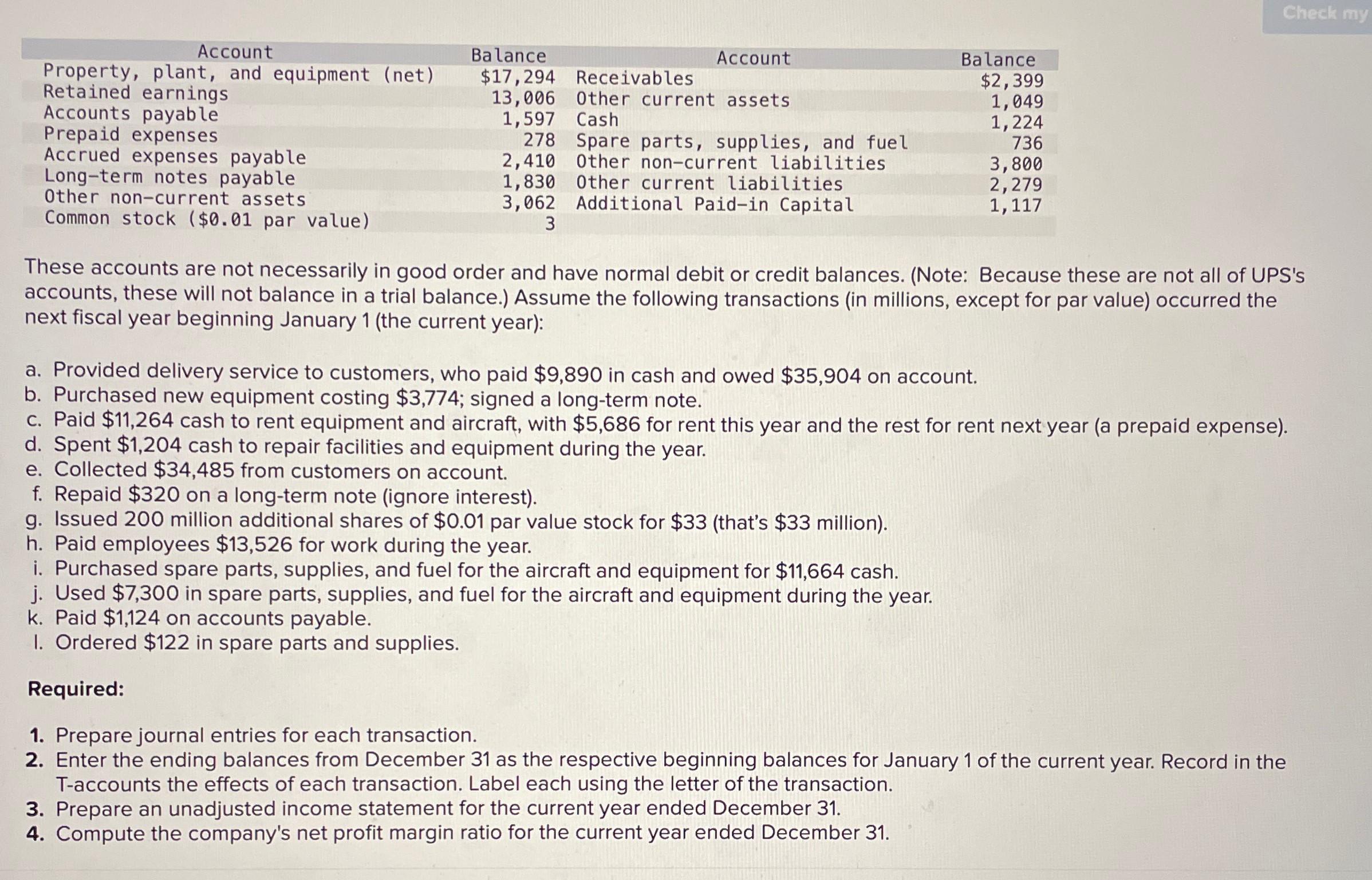Answered step by step
Verified Expert Solution
Question
1 Approved Answer
Account Property, plant, and equipment (net) Retained earnings Balance Accounts payable Prepaid expenses Accrued expenses payable Long-term notes payable Other non-current assets Common stock

Account Property, plant, and equipment (net) Retained earnings Balance Accounts payable Prepaid expenses Accrued expenses payable Long-term notes payable Other non-current assets Common stock ($0.01 par value) Account Balance $17,294 Receivables $2,399 13,006 Other current assets 1,049 1,597 Cash 1,224 278 Spare parts, supplies, and fuel 2,410 736 Other non-current liabilities 3,800 1,830 Other current liabilities 3,062 Additional Paid-in Capital 2,279 1,117 Check my 3 These accounts are not necessarily in good order and have normal debit or credit balances. (Note: Because these are not all of UPS's accounts, these will not balance in a trial balance.) Assume the following transactions (in millions, except for par value) occurred the next fiscal year beginning January 1 (the current year): a. Provided delivery service to customers, who paid $9,890 in cash and owed $35,904 on account. b. Purchased new equipment costing $3,774; signed a long-term note. c. Paid $11,264 cash to rent equipment and aircraft, with $5,686 for rent this year and the rest for rent next year (a prepaid expense). d. Spent $1,204 cash to repair facilities and equipment during the year. e. Collected $34,485 from customers on account. f. Repaid $320 on a long-term note (ignore interest). g. Issued 200 million additional shares of $0.01 par value stock for $33 (that's $33 million). h. Paid employees $13,526 for work during the year. i. Purchased spare parts, supplies, and fuel for the aircraft and equipment for $11,664 cash. j. Used $7,300 in spare parts, supplies, and fuel for the aircraft and equipment during the year. k. Paid $1,124 on accounts payable. 1. Ordered $122 in spare parts and supplies. Required: 1. Prepare journal entries for each transaction. 2. Enter the ending balances from December 31 as the respective beginning balances for January 1 of the current year. Record in the T-accounts the effects of each transaction. Label each using the letter of the transaction. 3. Prepare an unadjusted income statement for the current year ended December 31. 4. Compute the company's net profit margin ratio for the current year ended December 31.
Step by Step Solution
There are 3 Steps involved in it
Step: 1

Get Instant Access to Expert-Tailored Solutions
See step-by-step solutions with expert insights and AI powered tools for academic success
Step: 2

Step: 3

Ace Your Homework with AI
Get the answers you need in no time with our AI-driven, step-by-step assistance
Get Started


